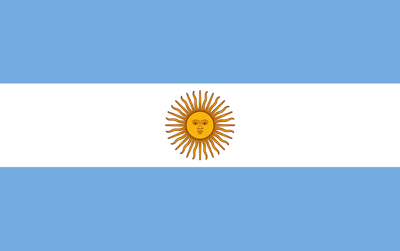Pakistan Local Cotton Market:
(The local cotton market is more active and prices showed softness, due to better local supply and higher global prices. Pakistan’s cotton consumption is higher than production, so imports are increasing. However, global trade faces challenges from a stronger US dollar and geopolitical issues, creating both opportunities and difficulties for the cotton industry)
1- The local cotton market saw a dip in prices, but activity surged due to the increased availability of cotton from both Sindh and Punjab. As the rainy season concluded, the cotton supply not only grew but also showed significant improvements in quality, which kept buyers engaged in the market. Furthermore, the rising trend in global cotton prices provided an additional incentive for buyers to continue purchasing at the current price levels, fueling further market activity.
2- A substantial increase in cotton yarn imports has been witnessed. Locally, decreased cotton prices and the surge in global cotton prices, particularly prices of New York cotton, have prompted mills to show greater interest in purchasing domestic cotton over imports.
3- Currently, Pakistan’s cotton consumption exceeds production, as a result of which imports will be increased. If conditions remain favorable, around 60 lac bales will be imported. So far, contracts for approximately 22 lac bales have been finalized, with additional import agreements under way.
4- As of September 30, 2024, cotton arrivals in Pakistan dropped by 59% year-on-year to 2.04 million bales, down from 5.025 million bales in 2023, according to PCGA data. Punjab saw a 65% decline, with arrivals at 0.727 million bales, while Sindh faced a 56% drop to 1.313 million bales. Despite the annual decline, fortnightly arrivals improved by 35% in Punjab and 47% in Sindh.
5- ICE cotton prices fell over 1%, hitting a one-week low, due to a stronger US dollar and weakened demand, especially from China, despite a 9% rise in US cotton exports for the week. A stronger dollar, driven by tensions in the Middle East and a dock worker strike, made cotton more expensive for international buyers.
5- The ongoing strike by US East and Gulf Coast dock workers, the first in nearly 50 years, disrupted about half of US shipping, further complicating global supply chains. Meanwhile, drought in Russia and drone strikes on Ukrainian ports are adding to trade concerns.
6- Last week, cotton prices in Punjab and Sindh showed soft trend and traded in range of 17,200 to Rs 18,200 per maund, (USC 0.74~0.80 lbs). In Sindh, cotton rate was Rs 17,200 to Rs 18,100 per maund, while in Punjab it ranged from Rs. 17,500 to Rs 18,200 per maund. KCA dropped 200 to at the of Rs. 17,800 per maund, PSF was same at Rs. 357 PKR/kg.
Local Yarn Market:
(The local yarn market maintained stability despite cash flow challenges. Reduced local cotton arrivals and increased yarn imports put pressure on local producers. Overall, the market faced a delicate balance between supply, demand, and rising costs)
1- The local yarn market remained stable, with steady prices and deliberate business activity. Cash flow constraints persisted. Local cotton arrivals fell short of expectations, potentially leading to price increases.
2- The arrival of imported yarn has significantly condensed demand for locally produced yarn and spinners balancing low inventory levels against escalating energy and production costs.
3- PSF prices remained stable this week and are expected to remain stable & disruptions in the Middle East of crude oil supplies have driven prices up
4- The Faisalabad market had a steady demand for polyester viscose (PV) yarn and slower activity in staple yarn counts. Cash flow constraints continued to pose challenges for businesses in the region.
| Count | Price in Pak Rupees / 10 LBS | Price US$/Bale |
| 16/1 Carded Weaving | 3300 – 3400 | 480 – 495 |
| 20/1 Carded Weaving | 3400 – 3500 | 495 – 510 |
| 30/1 Carded Weaving | 3750 – 3900 | 545 – 565 |
| 20/1 Combed Weaving | 3900 – 4000 | 565 – 580 |
| 30/1 PC Carded Weaving 52:48 | 3100 – 3400 | 450 – 495 |
| 40/1 Combed Compact Weaving | 4425 – 4525 | 640 – 655 |
| 60/1 Combed Compact Weaving | 5800 – 6000 | 840 – 870 |
| 80/1 Combed Compact Weaving | 7950 – 8150 | 1155 – 1180 |
| 40/1 CVC Carded Weaving 60:40 | 3850 – 4000 | 560 – 580 |
Export Yarn Market:
(The export yarn market remained under positive business activity as customers from all regions remained active in buying. There has been a decent number of inquiries floated by customers against which handsome deals closed. Suppliers are increasing their prices as per their booking position and it is expected that prices will remained firm and stable with a tendency to increase more in days to come)
1- The export yarn market showed good business activity as customers remained in buying.|
2- Suppliers were in good sales positions so they increased their prices as per their sales positions.
3- Customers look in a buying mood and it is expected that good business will be closed in days to come.
4- Cotton prices in domestic and international markets showed upward trend which put a positive impact on yarn prices as well.
5- Chinese customers remained very active and booked handsome quantities from all suppliers. After a span of 8 months, such activity has been observed from Chinese customers. It is expected that customers will buy more quantities in days to come as well.
6- European customers are also picking up pace as deals have been closed this week. Some inquiries are under discussion and we might see another phase of buying in weeks to come.
| Export Yarn Prices | ||||||||||||||||
|
Local Fabric Market:
(Another week went slow for Local Fabric as the dying units could not secure bulk orders however local brands and traders continued to support the market .We anticipate an improvement in trading activity in the coming weeks, with a potential of escalation in fabric prices)
1- The local fabric market showed slow activity for another week, affecting both narrow and wider-width fabrics. Local finishers faced challenges in securing bulk inquiries, resulting in limited orders at last week’s price levels after tough negotiations.
2- Despite this, local brands and traders continued to support the market, leading to a week of limited trading activity across both fabric widths.
3- Weavers have slightly increased their asking prices by 1% to 2%, though they remain open to negotiations. Most weavers have secured bookings for their narrow-width looms until mid-November and wider-width looms until end November to early December 2024, with onward deliveries being offered.
Export Fabric Market:
(Average kind of business activity was seen during the week from Far Eastern, USA and European markets. The prices were stable with firm tone. The suppliers are expecting that business activity will improve in days to come and prices may remain firm)
1- The export fabric market is not picking well due to less demand in general however limited number of inquiries were exchanged from all of the Far Eastern customers resultant limited order placement at current price levels.
2- Customers were expecting lower prices due to lower cotton prices but fabric suppliers were reluctant to decrease their prices due to stable and firm yarn prices. They are maintaining their policy to refuse the orders which are not profitable for them.
3- Currently suppliers are booked for next 30~40 days in export-based orders however getting good support from the local customers.
4- European and USA buyers were engaged in sharing their inquiries both narrow and wider width fabric and placed decent number of orders with their selected suppliers.
5- Wider width fabric prices are competitive based on imported yarn for 40 yarn count and above which attracted customers.
6- The suppliers for wider width are booked till mid of Dec and offering end Dec onward deliveries. Few of the suppliers are still offering end Nov ~ early Dec onward deliveries.
| Local and Export Fabric Prices
| ||||||||||||
|
Bed Linen and Towel:
(Pakistan’s Home textiles industry is facing price challenges in US and Europe. To overcome these, we must diversify, reduce costs, and collaborate with govt. of Pakistan to revise tariffs)
1- The US market is slow, resulting in low demand of Home Textile fewer orders, and less business activity, which is negatively impacting the home textiles industry.
2- European importers are offering very low prices, which are unsustainable and compromise quality and profit margins, making it difficult for suppliers to maintain their businesses.
3- Suppliers are under pressure to meet costs, maintain quality, and deliver products on time, which is becoming increasingly challenging due to the slow market and low prices.
4- Production houses are struggling to meet European target prices, which are often unrealistic and unviable, leading to difficulty in achieving desired profit margins.
5- Most European targets are not workable, as they have unrealistic expectations which making it hard for suppliers to comply with.
6- To mitigate these challenges, it is essential to explore other markets or product segments and diversify to reduce dependence on the US and European markets.
7- Renegotiating raw material prices is necessary to improve procurement strategies and reduce costs, which will help suppliers to maintain their profit margins.
Garments:
(Because of global economic uncertainty, garment demand is often slow but it’s going towards improvement. Orders from the EU and the US were increased. The denim industry anticipates orders for sustainable products during the fourth quarter)
1- The Pakistan garment industry is still having trouble operating at full capacity.
2- The majority of brands do not place large orders, such as those for the entire season, because they do not believe that brands would have a strong demand.
3- Orders are being placed in chunks considering urgent demands only.
4- The majority of garment manufacturers are operating at sixty to seventy percent of their capacity, and they are actively seeking more orders to replenish the capacity that is not being utilized.
5- A few US and EU brands are developing their FW25 products. Factories can often begin accepting orders by the end of Dec 2024, although this will depend on the kinds of apparel and accessories needed.
6- The market has observed a temporary shift in business from Bangladesh to Pakistan due to political challenges. However, such fluctuations are not uncommon, as business often moves between the regions depending on circumstances.
Crude Oil:
1- Crude Oil prices opened at USD 68.17 with higher level as compared to last week closing figures. in this week, crude oil prices showed upward trend and closed on higher side by the end of week.
2- In last day of the week, Crude Oil price closed at USD 74.38 with increase of 6.19 USD cents as of opening figure of week.
| Opening of Week | Closing Of Week | Change | |
| Price | 68.17 | 74.38 | 6.19 |
Exchange Rate:
1- In last week values of Pak rupee apricated against US Dollar’s, other major currencies showed mix trend in both interbank and open markets.
2- At the end of week, Euro closed on a negative note with figure of 1.09 and British Pound also closed on negative note with figure 1.31 against USD.
| Selling | Buying | |
| LC Sight | 275.76 | 275.71 |
| LC 120 Days | 264.82 | 264.77 |
| Open Market | 280.98 | 274.92 |
New York Cotton Future:
The New York Cotton Futures (NYCF) began the week on a strong note compared to the previous week’s closing figures.
Throughout the week, the market showed mixed trends and closed on lower side by the end of week.
1- December 2024 Closed at 73.27, marking a drop of 34 points from the previous week.
2- March 2025 Ended at 75.28, down by 8 points compared to the previous week.
3- May 2025 Finished at 76.52, reflecting an decrease of 0 points from the previous week.
4- July 2025 Closed at 77.12, showing a rise of 5 points from the previous week.
Liver Pool Indices:
1- Liverpool Index A opened at 84.65 lower levels than the previous week of closing figure.
2- In this week Index “A” showed a firm trend and closed on the higher side by the end of the week.
3- At the last day of the week, LPI “A” closed at 85.10 with an increase of 45 points.
| Opening of the Week | Closing of the Week | Change | |
| Index A | 84.65 | 85.10 | 0.45 |







